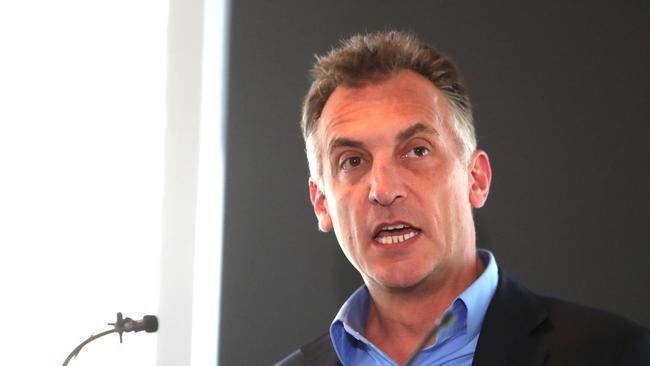Catalano takes aim at ‘irrelevant’ rules restricting rural TV
Rural media proprietor Antony Catalano says he is ready to mount a campaign to convince the government to change the ‘one-in-a-market rule’.

Rural media proprietor Antony Catalano says he is ready to mount a campaign through his Australian Community Media to convince the federal government to change the “one-in-a-market rule” and allow the greater sharing of media resources in the bush.
Mr Catalano, who owns ACM with his billionaire business partner Alex Waislitz, said the one-in-a-market rule, which restricts a business from controlling multiple television licences in an area, was “irrelevant” in the modern media world and that he would be open to doing deals with WIN and Southern Cross if he could not strike an agreement with Prime Media for closer co-operation.
Prime is now the subject of a $63m takeover by Seven West Media. Mr Catalano and Mr Waislitz have amassed a 13 per cent share in Prime and have signalled they would be interested in combining some newsroom resources if the deal were to go through.
Mr Catalano described the one-in-a-market rule as “antiquated and completely outdated”, and that it was absurd a company could only be allowed one TV licence in a region yet allowed to have two radio licences or multiple newspapers and as many websites as it liked.
“TV is not the influential medium it was, so it makes no sense to the people of Ballina or Newcastle or regional Victoria,” he said. “Do they need three services or would they be better served by the consolidation of those companies into one to produce a better quality newsroom and a more profitable business? The answer is yes.
“I continue to lobby and I’ve spoken to the Communications Minister. If we don’t see some results, we will start to message through our media.”
When asked if he was open to doing deals with WIN or Southern Cross in rural areas, Mr Catalano said “it is a possibility if we don’t get a satisfactory outcome” with Prime, although he would like to work with Seven to find a solution.
“We are open to all options because we are looking to expand our business into a much bigger consolidated regional media play across multiple media platforms. It doesn’t stop for us if the Prime deal goes through; there’s still an abundance of opportunities out there.”
He said there would certainly be opportunities around joint advertising sales initiatives, describing the regional broadcasters as being good at dealing with media-buying agencies while the print products he owned were not.
“About 23 per cent of our revenue is agency, whereas about 75 per cent of TV revenue is agency. So you see the benefits of having the agency representation in selling across all of those regional assets if you can. The reality of a lot of our regional assets is that nobody has come close to covering the issues in Canberra, Ballarat, Newcastle and Warrnambool like we can, because we have people on the ground. We need to improve our advertising and sell that through. But I think there’s clearly been a disconnect in media agencies between 36 per cent of Australians in regional Australia. There’s 8.8 million people in regional Australia and they only attract 10 per cent of the advertising spend.”




To join the conversation, please log in. Don't have an account? Register
Join the conversation, you are commenting as Logout